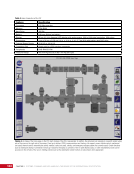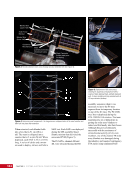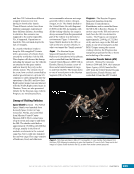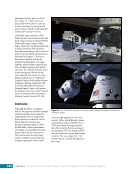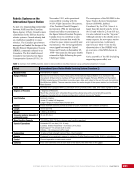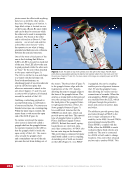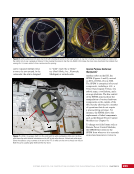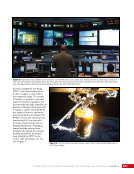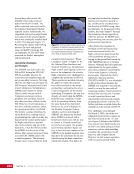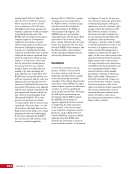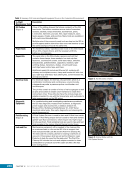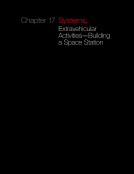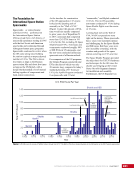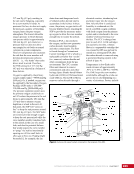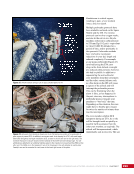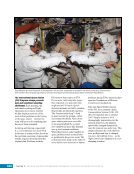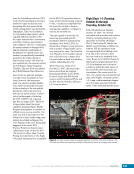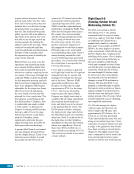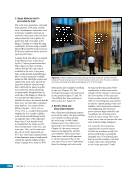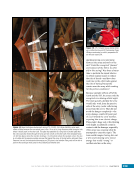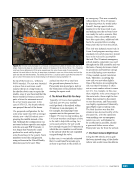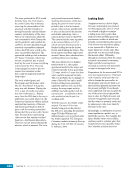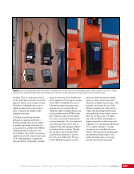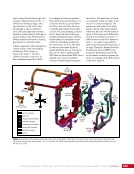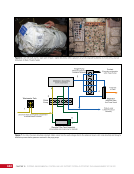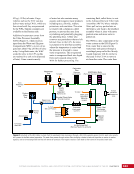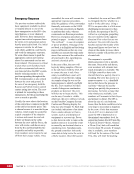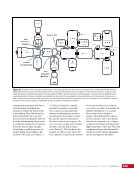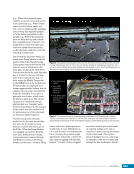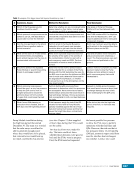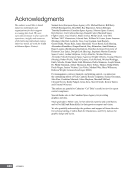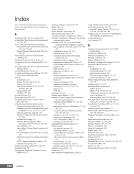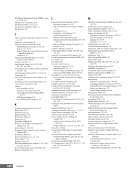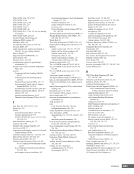CHAPTER 18 DAY IN THE LIFE: RISKY AND REWARDING SPACEWALKS—SPACE SHUTTLE MISSION STS-120/ISS-10A 316 such as freeing up small snags along the guidewires that help keep the array straight (Figures 11-12). Guidewire (vertical) Hinge Solar Cells (gray) Blanket (folded up like an accordian) Figure 10. A solar array blanket located in a ground facility. It is shown still mostly folded up in the lower half of the blanket box, as if the ground had just started to command a deployment. The active side of the array (shown) is where the solar cells (gray) are located to gather energy from the sun. “Guidewire” that runs between top and bottom halves of blanket box that guides the array during deploy and helps keep the array flat while deployed Guidewire Hinge Grommets Figure 11. Passive side of the array (solar cells are on the other side of the array). The blankets are hinged. When they deploy, small grommets move up the guidewire. The guidewire keeps the blankets from swaying and bowing too much when the array is fully deployed. Team 4 and the console team were still working on the SARJ inspection EVA but had to start reprioritizing an array repair in short order. On Flight Day 9, the team decided to change EVA 4 from the SARJ EVA to a solar array repair EVA. Parazynski and Wheelock were chosen to perform the spacewalk, with Parazynski performing the repair since he was the most experienced EVA crew member on board. The Challenges Repair of the array would be a high- degree-of-difficulty spacewalk if a fix was even possible. The flight control team did not have much time to create and execute such an EVA before the shuttle had to undock. Under the direction of the Team 4 flight director, multiple flight control and engineering teams—EVA, robotics, and power, to name a few—worked around the clock to identify each roadblock and devise a fix. Below are some of the challenges that the ground team and crew faced going into the EVA. 1. The Damage Might Be Just Out of Reach The solar arrays were far, far away from the crew modules. P6 was no longer in the center of the truss as it was at the beginning of the mission. The most obvious technical issue was going to be reaching the damage. The snag could not be reached by an EVA crew member on the robotic arm, even with the arm fully outstretched. The team looked at the potential for retracting the array so the damage was near the base, but it was too risky to move the array that much. The damage could get worse, and
Purchased by unknown, nofirst nolast From: Scampersandbox (scampersandbox.tizrapublisher.com)








































































































































